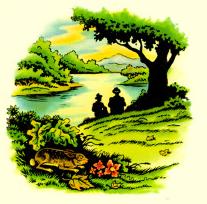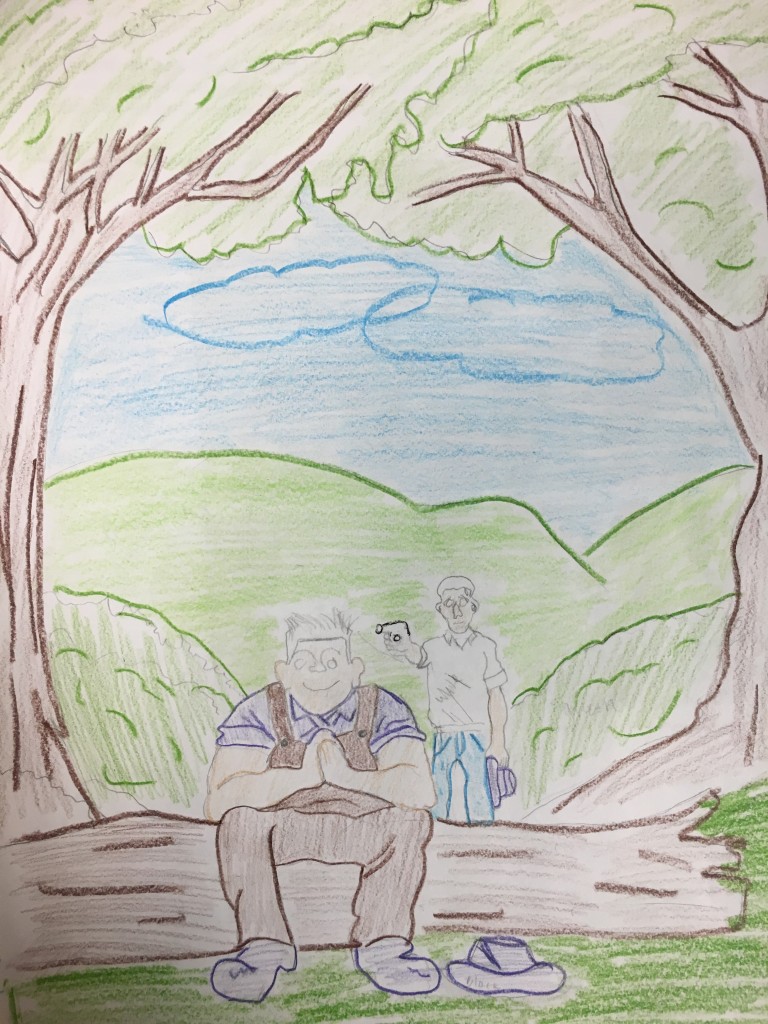Power in Literature, Power in Life
 In this unit, entitled “Power in Literature, Power in Life,” we will read Steinbeck’s famous novella Of Mice and Men with a critical eye turned toward examining social structures of power and the authenticity of friendships. We will work to understand how race, gender, and age influence societal power dynamics. We will look at the characters as well as ourselves to consider ways in which people show genuine care for others, or how they care only for themselves. A secondary aim is to gain an understanding of what authentic relationships entail. The relationship between George and Lennie centrally engages the key themes of power and authentic friendship.
In this unit, entitled “Power in Literature, Power in Life,” we will read Steinbeck’s famous novella Of Mice and Men with a critical eye turned toward examining social structures of power and the authenticity of friendships. We will work to understand how race, gender, and age influence societal power dynamics. We will look at the characters as well as ourselves to consider ways in which people show genuine care for others, or how they care only for themselves. A secondary aim is to gain an understanding of what authentic relationships entail. The relationship between George and Lennie centrally engages the key themes of power and authentic friendship.
Text Set
Of Mice and Men (John Steinbeck)
“To a Mouse” (Robert Burns)
“I’m Not a Tart” (Leighton Meester)
Dust Bowl Photography (Dorothea Lange, et al.)
Of Mice and Men (Gary Sinise)
Selections from Nicomachean Ethics (Aristotle)
Big Ideas and Essential Questions
- How do our friendships impact us? How do we know someone is a friend?
- What does the “American Dream” mean and are there any dreams that everyone shares?
- How do people maintain power over others and in what ways is power connected to someone’s identity?
These questions all speak to the character relationships in Of Mice and Men. Steinbeck provides rich character archetypes that allow the text to act microcosmic in our social world, thus allowing us to read the text as we might “read the world.”
Learning Goals
For key learning goals, see the corresponding Growth & Learning sub-section.
Curriculum Standards
RL.9-10.2 | “Determine a theme or central idea of a text and analyze in detail its development over the course of the text, including how it emerges and is shaped and refined by specific details; provide an objective summary of the text.” We will read Of Mice and Men daily and consider the meaning of the text’s rich themes, including forming identity and the American Dream, through in-class activities and homework.
RL.9-10.4 | “Determine the meaning of words and phrases as they are used in the text, including figurative and connotative meanings; analyze the cumulative impact of specific word choices on meaning and tone (e.g., how the language evokes a sense of time and place; how it sets a formal or informal tone).” We will explore how the setting and diction impacts the text’s meaning.
RL.9-10.5 | “Analyze how an author’s choices concerning how to structure a text, order events within it (e.g., parallel plots), and manipulate time (e.g., pacing, flashbacks) create such effects as mystery, tension, or surprise.” We will consider how the linear nature of the text and its short timeline add tension and drama to the text. Included in these conversations is time to talk about the intensive use of foreshadowing in the text.
RL.9-10.7 | “Analyze the representation of a subject or a key scene in two different artistic mediums, including what is emphasized or absent in each treatment.” When we look at naturalism, we will consider different artistic portrayals in style as a means to talk about the text. When viewing cinematic adaptions, we will compare and contrast the same scenes with the text.
RL.9-10.8.A | “Relate a work of fiction, poetry, or drama to the seminal ideas of its time.” Particularly when we discuss gender, we will look to topics of women’s rights to consider the text through a feminist lens. Race and class will also be foci.
RL.9-10.9 | “Analyze how an author draws on and transforms source material in a specific work (e.g., how Shakespeare treats a theme or topic from Ovid or the Bible or how a later author draws on a play by Shakespeare).” The texts inspired from and by Of Mice and Men will provide the opportunity to discuss the far-reaching effects of literature.
RI.9-10.5 | “Analyze in detail how an author’s ideas or claims are developed and refined by particular sentences, paragraphs, or larger portions of a text (e.g., a section or chapter).” We will conduct close readings of student-chosen scenes to dive deeper into a text’s meaning. This will be done with informational texts that relate to Of Mice and Men.
RI.9-10.7 | “Analyze various accounts of a subject told in different mediums (e.g., a person’s life story in both print and multimedia), determining which details are emphasized in each account.” We will learn about Steinbeck and his other works and themes. Our opening lesson on the Dust Bowl will also view the setting through different media.
W.9-10.10 | “Write routinely over extended time frames (time for research, reflection, and revision) and shorter time frames (a single sitting or a day or two) for a range of tasks, purposes, and audiences.” Daily writing will take the form of low-stakes assignments, while we will conduct weekly writing with the goal to create a final portfolio.
W.9-10.1a | “Write arguments to support claims in an analysis of substantive topics or texts, using valid reasoning and relevant and sufficient evidence. (a) Introduce precise claim(s), distinguish the claim(s) from alternate or opposing claims, and create an organization that establishes clear relationships among claim(s), counterclaims, reasons, and evidence.” At least one aspect of the final portfolio will be analytic, academic writing.
W.9-10.3.a-b | “Write narratives to develop real or imagined experiences or events using effective technique, well-chosen details, and well-structured event sequences. (a) Engage and orient the reader by setting out a problem, situation, or observation, establishing one or multiple point(s) of view, and introducing a narrator and/or characters; create a smooth progression of experiences or events. (b) Use narrative techniques, such as dialogue, pacing, description, reflection, and multiple plot lines, to develop experiences, events, and/or characters.” Sections of the portfolio will also allow for students to try out new forms of narrative writing.
SL.9-10.1 | “Initiate and participate effectively in a range of collaborative discussions (one-on-one, in groups, and teacher-led) with diverse partners on grades 9–10 topics, texts, and issues, building on others’ ideas and expressing their own clearly and persuasively.” Students will engage in whole-class conversations, but also will have substantive conversations in pairs and in small groups.
SL.9-10.4 | “Present information, findings, and supporting evidence clearly, concisely, and logically such that listeners can follow the line of reasoning and the organization, development, substance, and style are appropriate to purpose, audience, and task.” We will present our portfolios to class in order to critique and revise them.
SL.9-10.5 | “Make strategic use of digital media (e.g., textual, graphical, audio, visual, and interactive elements) in presentations to enhance understanding of findings, reasoning, and evidence and to add interest.” Our conversations on allusions and popular culture will bring in forms of the aforementioned materials. Students will incorporate these into their portfolios.
L.9-10.1 | “Demonstrate command of the conventions of standard English grammar and usage when writing or speaking.” Our final, high-stakes writing will be publishable pieces.



